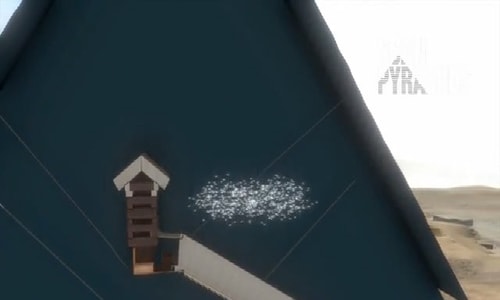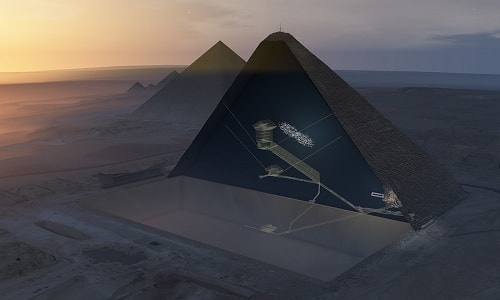30 meter room discovered in the Great Pyramid of Egypt
A vast hidden chamber has been discovered deep inside the Great Pyramid of Giza using a state-of-the-art imaging system that can "see" through stone walls.

30 meter room discovered in the Great Pyramid of Egypt
Graphic of empty chamber inside the Great Pyramid. Video: YouTube.
An international team of researchers has identified a large chamber at least 30 meters long above the Grand Gallery, a sloping corridor connecting two other chambers called the "King's Chamber" and the "Queen's Chamber." The discovery was published in the journal Nature yesterday, according to the International Business Times.
The team is still unclear about the exact structure and function of the newly found chamber, but the discovery allows scientists to better understand the pyramid and its structure.
 |
Location of empty room inside the Great Pyramid. Photo: New Scientist |
"We avoid using the word vault because it is not a vault, but we know it is an empty room. The room has the same characteristics as the Grand Gallery, a structure 8 meters high and 47 meters long. We do not know if the room is made up of one structure or several connected structures. What we know for sure is that the large room is there, it is very impressive and no previous hypothesis predicted its existence," said Mehdi Tayoubi, head of the research team at the HIP Institute in France.
At 146 meters high, the Great Pyramid of Giza was the tallest structure in the world until the 19th century, and remains among the largest man-made structures.
The pyramid was completed around 2560 BC during the reign of Pharaoh Khufu. Construction took about 20 years. It is part of the larger Giza pyramid complex, along with two smaller pyramids, several temples and tombs.
To study the pyramid's interior, international researchers imaged its interior using subatomic particles called muons, byproducts of cosmic rays that can penetrate stone. As the particles move through stone or air, their distinct paths allow them to distinguish voids from solid structures.
The research is part of the ScanPyramids project, a collaboration between the HIP Institute and Cairo University, to explore Egyptian pyramids from the Old Kingdom, using non-destructive and non-invasive techniques, including 3D scanning, emulsification equipment and muon imaging technology.
According to VNE
| RELATED NEWS |
|---|


